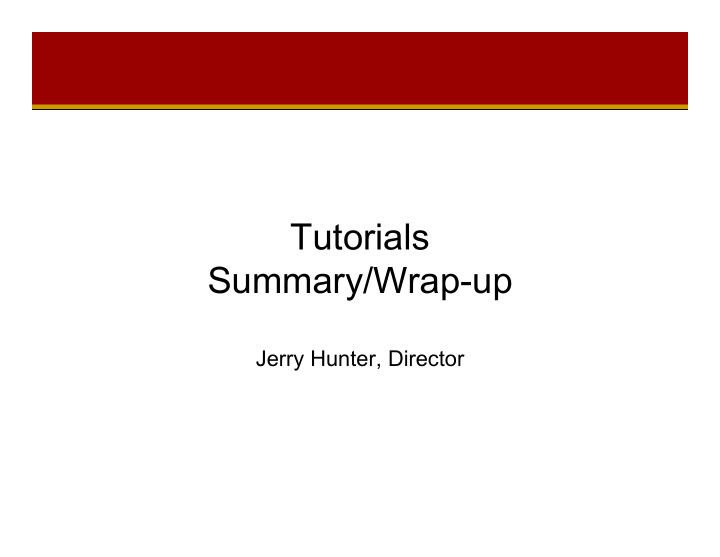



Tutorials Summary/Wrap-up Jerry Hunter, Director
Analytical Methods
Picking a technique • Many techniques are available and you should pick the technique that is most appropriate for your problem, not just the most convenient • Questions you need answers for What is it that you want to measure? Do you need images/micrographs? What size are the features? Do you need elemental information? Which elements? Do you need chemical bonding information? What is the concentration? Do you need information in depth? Do you need quantitative information or qualitative? Do you have standards?
When do you use it? • Auger When you need elemental information (>1% concentration) on um to 10’s of nm size objects (both surface and depth information available). Excellent for surveys • XPS When you need elemental or bonding information (>0.1%) on large (>10 um) features (both surface and depth information available). Excellent for surveys. • Static SIMS When you need ppm detection limits on sub-micron (>200nm) size areas. Gives both elemental and bonding information. Excellent for surveys. • SPM When you need quantitative topographic information on your sample (i. e. roughness) with nm scale lateral resolution. Are also a large # of associated techniques • Atom Probe When you need 3D elemental identification with atomic resolution on < 200nm sized areas • XRD When you need orientation or strain information. Also film thickness and density can be measured with XRR
When do you use it • Backscattering (RBS, ISS, MEIS) When you need elemental information (>10ppm) on large areas (mm). Becomes more surface sensitive as you go to lower energies (ISS>MEIS>RBS), but less depth measured. • SEM/EDS When you need micrographs of your sample (down to few nm). Can get elemental information when you use EDS. EDS good for surveys • TEM When you need micrographs of your sample (sub-nm). Can get elemental information when you use EDS or EELS. • Raman When you need non destructive molecular information on micron sized areas • GDOES When you need elemental depth compositional depth profiling of up to 100um depth • FIB When you need to modify materials on the nm scale. If it is a DB FIB you can also get high resolution images or EDS/EBSD maps. Also used for sample preparation for HR TEM analysis
https://www.eag.com/resources/brochures/
Recommend
More recommend